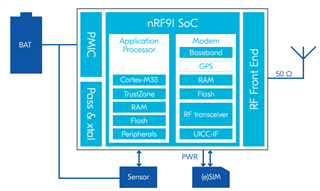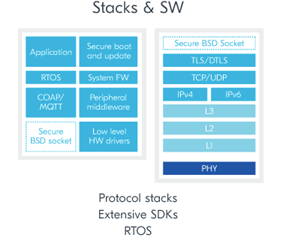I have a question about what functionality is handled in the modem firmware vs. the application firmware.
I see from the nRF Connect SDK that the nRF9160 application communicates with the LTE modem using sockets:

What networking functionality is handled by the LTE modem vs. the application (custom developed, Zephyr, libs, or otherwise)?
Does the modem handle TCP, TLS, etc., or is that handled somewhere in the Zephyr code or other libraries? I don't have much experience with BSD sockets, but I see they are created with a family, protocol, and type; does the modem firmware make use of that information?
Thanks,
Erik




